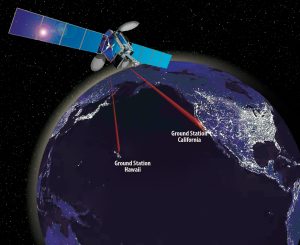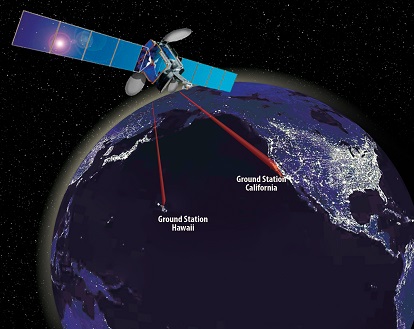NASA engineers intend to demonstrate a new laser-based communication system in 2016 that will allow the streaming of high-definition video from distances beyond the Moon.
“This dramatically enhanced transmission speed will be demonstrated by the Laser Communications Relay Demonstration (LCRD), one of three projects selected by NASA’s Office of the Chief Technologist (OCT) for a trial run,” reported NASA, “To be developed by a team led by engineers at the NASA Goddard Space Flight Center in Greenbelt, Md., LCRD is expected to fly as a hosted payload on a commercial communications satellite developed by Space Systems/Loral, of Palo Alto, Calif.”
“Although NASA has developed higher data-rate radio frequency systems, data-compression, and other techniques to boost the amount of data that its current systems can handle, the Agency’s capabilities will not keep pace with the projected data needs of advanced instruments and future human exploration,” said Dave Israel, the LCRD Principal Investigator who is leading a multi-organizational team that includes NASA’s Jet Propulsion Laboratory, Pasadena, Calif. and Lincoln Laboratory at the Massachusetts Institute of Technology, Cambridge, Mass.
“The solution is to augment NASA’s legacy radio-based network, which includes a fleet of tracking and data relay satellites and a network of ground stations, with optical systems, which could increase data rates by anywhere from 10 to 100 times,” according to NASA.
NASA explained that the “payload will include telescopes, lasers, mirrors, detectors, a pointing and tracking system, control electronics, and two different types of modems” – one for “communicating with deep space missions or tiny, low-power smallsats operating in low-Earth orbit”, and one to “handle much higher data rates, particularly from Earth-orbiting spacecraft, including the International Space Station.
“Once the payload receives the data, it would then relay it back to ground stations now scheduled to operate in Hawaii and Southern California.”
There will be multiple ground stations so that “if bad weather prevents a signal from being sent or received at one location, the network could hand over the responsibility to one of the other ground stations or store it for later retransmission,” NASA reported.
“The demonstration is expected to run two to three years,” according to NASA.
For more info, click here.






